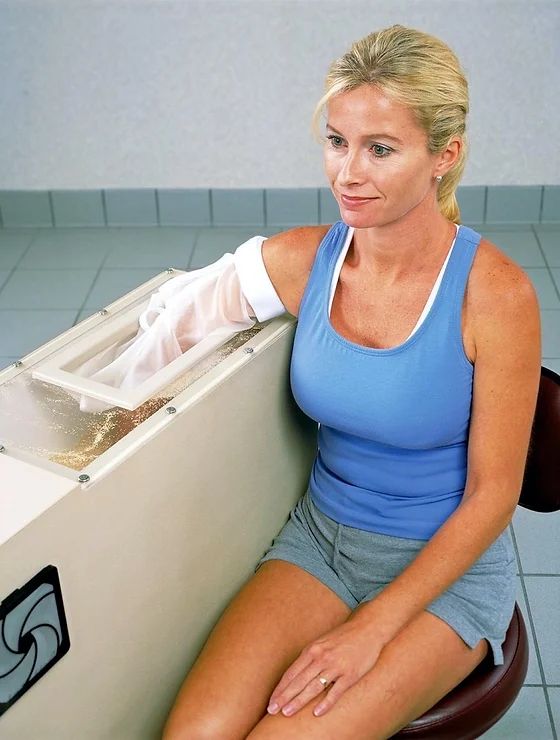Therapeutic Modalities
Therapeutic modalities refer to the administration of thermal, mechanical, electromagnetic, and light energies for therapeutic purposes. They are commonly used by physiotherapists to help their patients/clients achieve therapy goals.
Paraffin wax therapy
When used in the physical therapy setting, it is often used on the hands to help with pain relief caused by osteoarthritis, rheumatoid arthritis, fibromyalgia, tendon/ligament pains, and other musculoskeletal issues in the hands and joints. It is also used to help improve joint mobility in the hands, help minimize spasming muscles, and improve healing for sprains and strains in the small muscles and connective tissues in the hands.

Thermal Modalities
Hot Packs & Cold Packs
When to use heat and when to use cold packs is a common question in a physical therapy clinic. As a general rule, cold packs are used within the first 24 hours of an injury (or procedure) and/or if there is edema present or the risk of edema for 2-3 weeks post-op. Hot packs are used for aches, pains or to increase the flexibility of soft tissue. Heat is also good to increase blood flow to an area and to promote healing. Moist heat and cold packs are great treatment modalities to provide quick pain relief.

Moist Heat
Moist heat, or hot packs, may be applied to your body if you have an injury. The heat helps to increase circulation to the injured tissues, relax the muscles, and provide pain relief.
At Integrity Therapy Group, our hot packs are kept in a device called a hydrocollator. This is a large tank of hot water. The hot packs are cloth packs filled with clay, but sand or silica mixture hot packs are sometimes used. The hot pack absorbs the hot water, and then it is wrapped in terry cloth covers and towels before being applied to your body. The hot pack is usually kept on the injured body part for 15 to 20 minutes.
Cold Packs
If you have an injury, cold packs or ice may be applied to your body to help decrease pain and control inflammation. Ice is usually used during the acute or initial phase of injury to limit localized swelling around tissues.
Cold packs are usually applied for 15 to 20 minutes. Like hot packs, care must be used to prevent skin damage from getting too cold.

Fluidized Therapy
A high-intensity heat modality consisting of a dry whirlpool of finely divided solid particles suspended in a heated air stream, the mixture having the properties of a liquid.

Fluidotherapy
Fluidotherapy is a high-intensity heat modality consisting of a dry whirlpool of finely divided solid particles suspended in a heated air stream, the mixture having the properties of a liquid. In addition to the superficial heat, it provides tactile stimulation while also allowing for active range of motion.
Studies comparing its effective heating with that of a paraffin bath and whirlpool have found them to be similar. Fluidotherapy is effective in reducing pain, edema, and muscle spasm from acute or subacute traumatic or non-traumatic musculoskeletal disorders of the extremities. It has been proven to increase the range of motion and decrease pain and stiffness in injured or arthritic hands and wrists.


